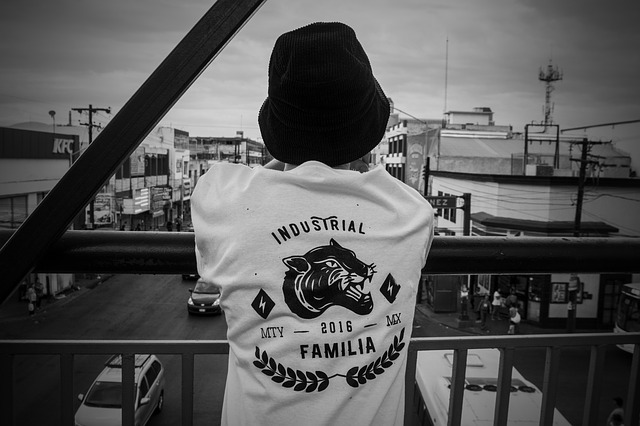Since t-shirt shops in Miami printed shirts for local resorts, the print-on-demand industry expanded. From the beach shops to rock concerts, custom tees are sold as a souvenir or to commemorate the event. Now this industry has the art side and the profit side. While the expression in art is good, it is fueled by money as well.
Today many online celebrities, influencers, and athletes used it for self-branding. Unlike painters that create works on canvas, the modern artist uses clothing to advertise their craft. Now let’s dive deeper into on demand printing, the business of colors and fonts.
Starting With an Idea
Like any other business, we start with an idea. Suppose you’re a graphic designer who needs an avenue to showcase your work. You can make a profit by entering this industry in this age where self-branding is a booming business. You can make your own or create for others a logo or a mascot that is bound in the parameters of being unique; or a statement shirt with striking letters expressing the wearer’s mood or opinion.
Ways to Print
In t-shirt printing, there are a few methods to consider, depending on the market you will be getting into. They all have their own pros and cons, based on the design and the volume you need to produce. Here are the three major methods you can consider.
- Silk Screening
Silk screen printing is the oldest method of the three. It was first used in ancient China. The technique and technology endured the test of time due to their simplicity. Printing is achieved by putting a stencil of the image on a screen, then on the garment. After removing the excessive paint, a printing of the design is left on the surface.
Pros – It is a simple process and can be duplicated several times since the stencil is reusable. You can use many stencils to create a complex design for complicated graphics.
Cons – The inks are expensive if you will be doing a few shirts. A space is needed for the messy process. Less is more for this printing process.
- Heat Transfer
This is achieved by printing the design on heat transfer paper, which is then heat pressed to the garment.
Pros – You can create more details than silkscreen since the image is pre-printed. The heat transfer method is less messy and needs no drying time.
Cons -The image can only be used once. You can buy pre-printed pictures, but you need a printer and heat transfer paper for a custom image. This method requires a heat press or an iron, so be cautious not to get burned.
- DTG
Direct-To-Garment printing is used for turning a digital image into a shirt design.
Pros – the method makes elaborate graphics easier to print on fabric—no need for any stencil or heat transfer paper. The image is printed directly, which is more detailed and has vivid colors.
Cons – Limited printable fabrics, less durable compared to silkscreen. It needs a little skill to operate equipment and can’t reduce cost with bulk orders.
Avenues for Designs
Preparing your method for printing is one thing. Now, where will your market be? From sports events to independent clothing shops, here are some niches you can consider:
- Branding
Celebrities and influencers in screens and sports are now capitalizing on their popularity. Having a brand as a representation is not new since Michael Jordan used one since the 90s.
- Events Memorabilia
Both music festivals and sports events sell souvenirs like t-shirts. The most preferred markets are pro wrestling events and rock concerts. Professional sports like basketball, football, soccer, and rugby events have a loyal fan base. Most of them will be buying onsite and online. The event shirt is an excellent market for your print-on-demand business.
- Statement Shirts
Young adults have the angst of their youth, but now in matured senses. Show your sense of humor and opinion in a statement shirt. A statement shirt is an excellent eye-catcher. Also, a statement shirt is a go-to for movements and expressing team spirit. The simplicity of a slogan helps promote unity.
- Graphic Shirts
Vivid colors, detailed images, graphic designs are for the artistic people. From pop arts to unique characters, your creativity is unlimited. Being versatile could land you in broader markets.
How Can You Be Unique?
Uniqueness is defined by the way you get your inspirations. From nature or pop culture, make something new while taking a nod to the classics. As an artist, set free your creativity and find your own style. On the other hand, you need to cater to buyers’ needs. Remember, customer satisfaction is always essential.
If you are in need of custom shirts, Printailor is here to help. With a professional support team to assist and a reliable fulfillment system, it is dedicated to delivering you quality custom shirts. Reach out for more information today!



